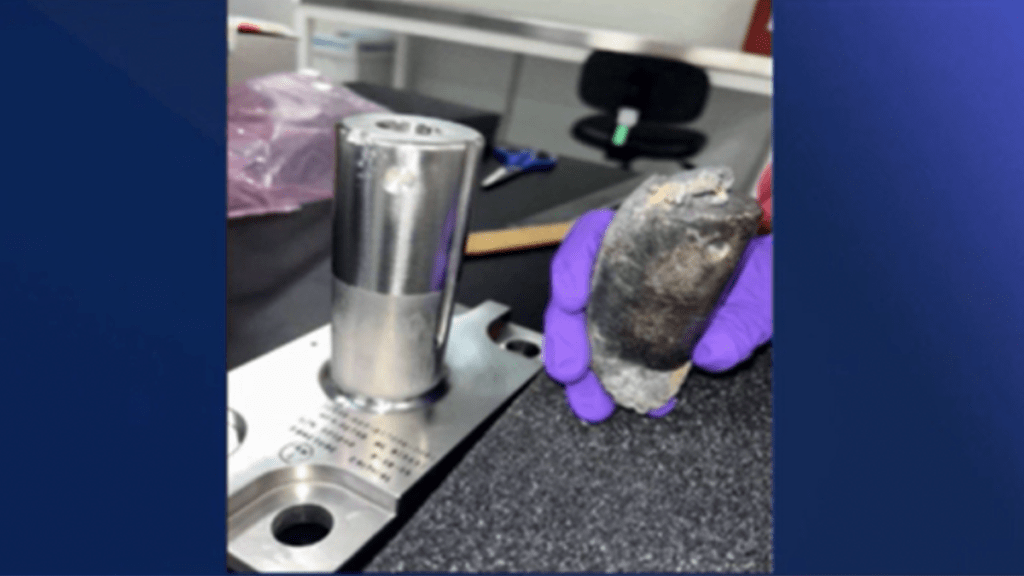NASA confirmed on Wednesday that a 1.6-pound piece of hardware that was used at one time with the International Space Station (ISS) hit a home in Naples, Florida, last month after surviving the trip through Earth’s atmosphere.
The agency did not release the exact address of the home impacted.
According to NASA, the chunk of metal was a stanchion. That’s a part of some equipment used to mount batteries connected to the ISS. When operational, the equipment weighs around 5,800 pounds!
So why was what made it to Naples so much smaller and lighter in weight? Earth’s atmosphere!
According to NASA, the origins of what landed in Collier County can be traced back to March 2021. That’s when the piece of equipment from the ISS was released, effectively becoming something referred to as “space junk.”
Space junk is a blanket term used to describe pieces of discarded man-made objects that are perpetually stuck in low Earth orbit above our planet. It includes things like defunct satellites, rocket fragments, or in our case, the no-longer needed equipment from the ISS.
We should mention that though the events in Collier County, Florida, are notable, space junk on its own isn’t anything new or uncommon. NASA says there’s something on the order of 6,000 tons of it in low Earth orbit above our planet right now.
With the events of last month, from March 2021 until March of this year, the piece of space junk stayed in orbit until it got pulled toward our planet, going through some big physical changes in the process.
Earth’s atmosphere offers far more drag and resistance on things that move through it as compared to what objects feel in space, even though things like space junk can be moving tens of thousands of miles per hour!
The drag our atmosphere generates helps to (more often than not) burn up small objects like space junk and items like meteors. The effect we see from Earth is sometimes called a shooting star, as the view looks like a streak of light shooting across a night sky.
NASA says that with meteors, some 95% of them burn up in our atmosphere and never make it to the ground. As they burn, they get smaller, so much so that much of what we call shooting stars are caused by things as small as a grain of rice!
That’s what makes what happened in Naples so interesting. NASA expected the item to burn up in our atmosphere, but it didn’t. That’s why it’ll be studied further and incorporated into modeling to give space experts a better idea of how future pieces of space junk may behave as they re-enter our planet’s atmosphere.




